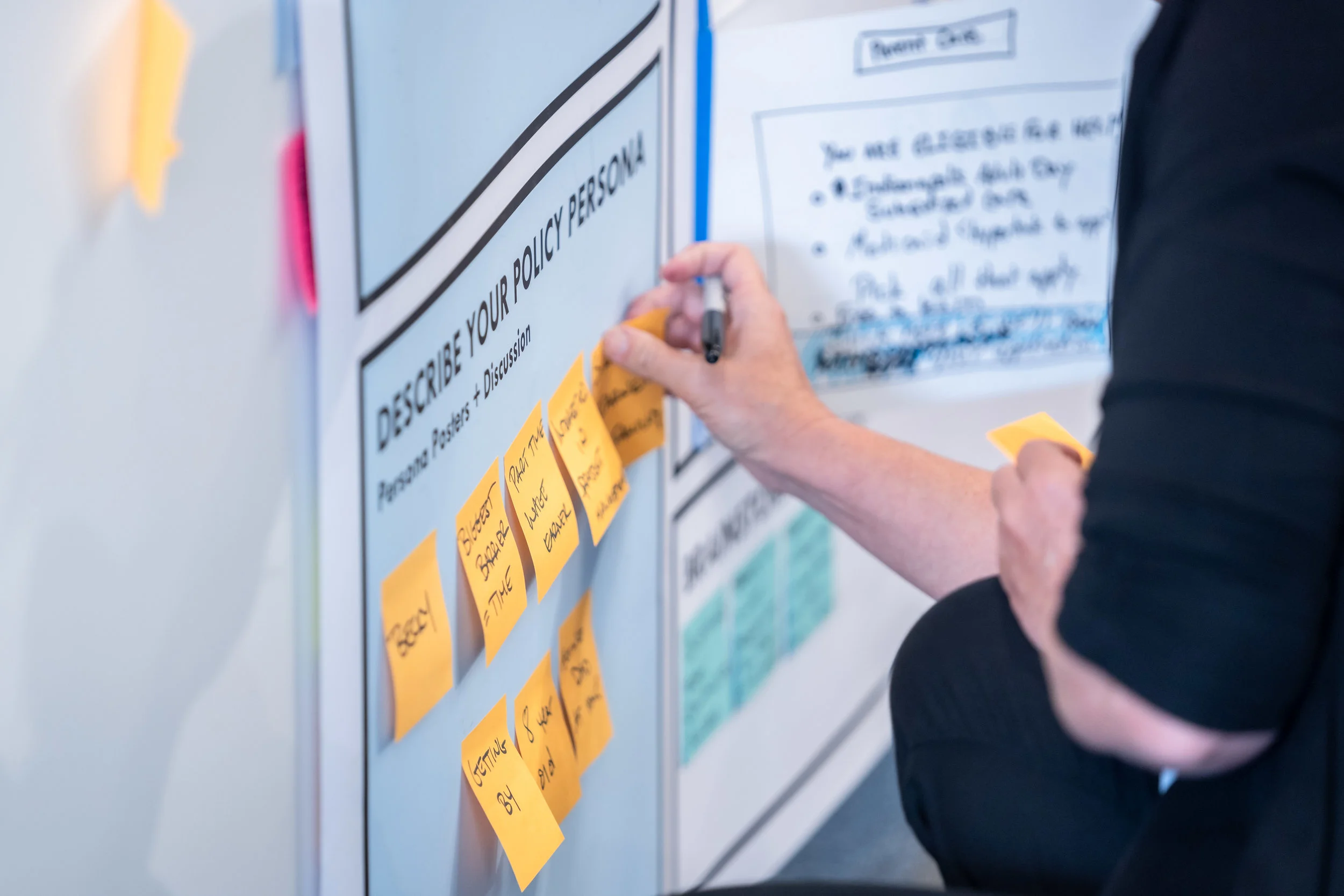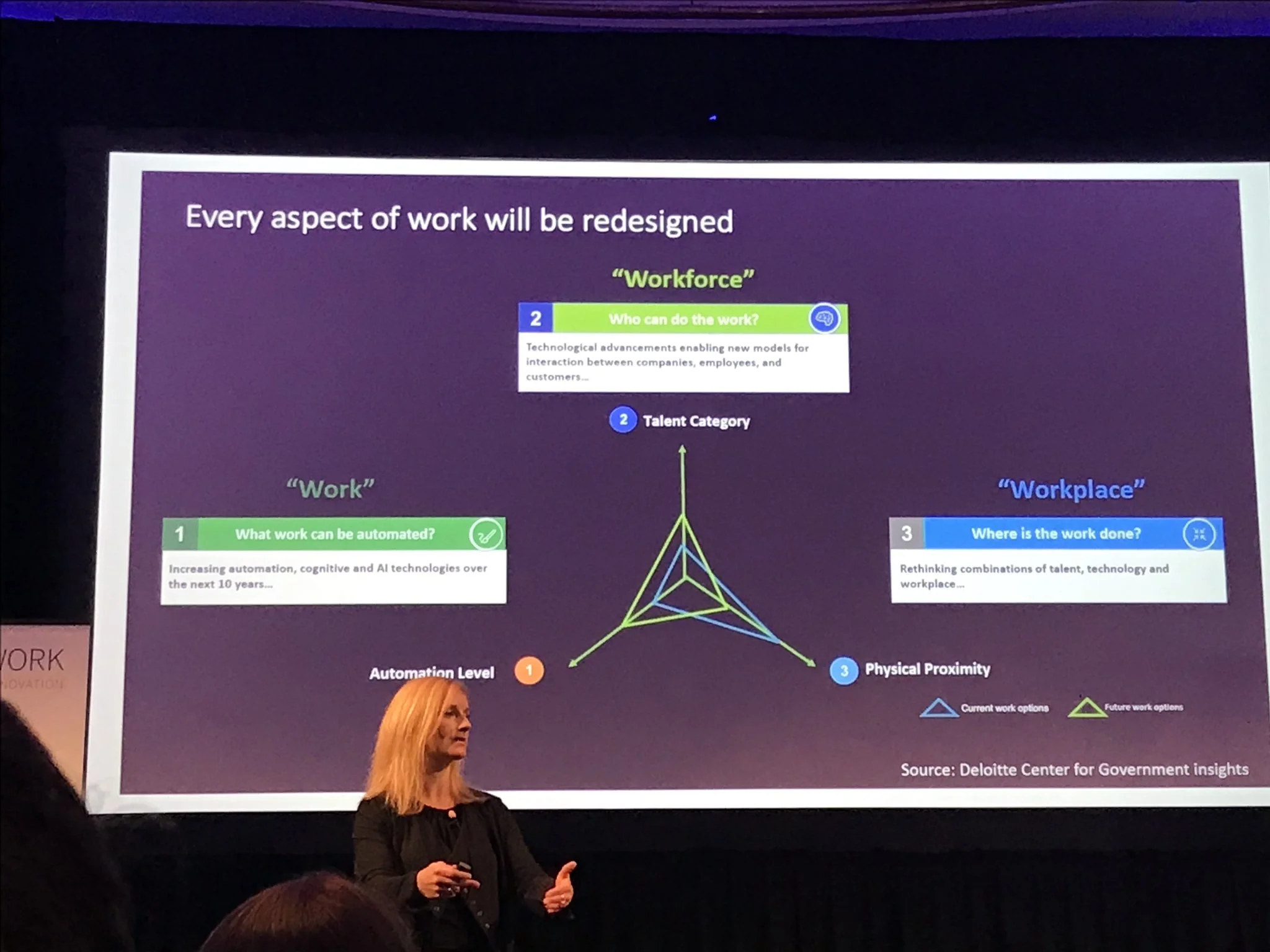These past two weeks have been a whirlwind of travel and conferences. I’ve enjoyed several typical byproducts of those types of events (networking, learning, etc…) but also a few things that are much rarer: inspiration and re-energized passion. This is largely thanks to my most recent stop: NASA’s Education Innovation Summit, held in Orlando, FL from October 30-November 1. This event focused on how partnerships and student inspiration can act as catalysts for change, specifically: (1) discussing strategies to inspire students who are capable of academic success in science, technology, engineering, and mathematics (STEM) but lacking in motivation, and (2) contributing to ideas to help strengthen collaboration among industry, non-profit organizations, academia, and government agencies. [1] Steve Ressler from Govloop and Alex Howard from O’Reilly Media attended a different event surrounding the STS-133 shuttle launch held at the same time, the #NASATweetup, but I think I can easily say we all walked about having a paradigm shifting experience. This posting focuses on my major take-aways from this immersive experience at NASA.
In Washington, many recent conversations on blogs and in the halls of the federal government have revolved around about how to further open government/ gov 2.0 and whether or not it’s “dead”, how to drive IT innovation, how to improve performance and mission delivery through technology, and how to best leverage partnerships and innovative financing to maximize public value. These are all important questions with complicated answers, but as I sat with educators, NASA scientists and private sector executives in Orlando this week, it hit me that we are largely focusing on the wrong questions. We are focused on WHAT we’re doing as a government and HOW we deliver those services and not WHY we’re doing it. I attribute this synapse fire to the keynote speaker, Simon Sinek, the creator of “the golden circle”.
Simon highlighted Apple as an example of how to properly use the golden circle (“why” first, “how” second and “what” third) to drive adoption. Why is Apple successful as a company and why do they have such phenomenal brand loyalty? According to Simon it’s simple: Apple sells a value system (the WHY) not a product (the WHAT). If you like Apple, you believe in challenging the status quo. You’re hip, different, and innovative. You’re current, educated and playful. You are an early adopter. You’ve got an appetite for risk and like people to know that. They base their whole sales pitch on the notion that there are enough people who share that value system that they’ll be profitable. When you buy an Apple product you’re buying a value system, not necessarily the best product for that purpose. Furthermore, Apple can charge a premium to those folks that have unbalanced loyalty to them as a company because of this value proposition.
But how does this apply to the Open Gov/Gov 2.0 community? Our WHY is NOT transparency, participation and collaboration. If we strive to be open for openness sake alone we’re not driving anything that matters. Open Gov supports the mission. But WHY is the mission important and WHY is open government essential to further it? We’ve been largely focusing on the HOW without a clear WHY. Even Jeffrey Levy’s spot-on “Mission, Tools, Metrics, Teach” approachmisses step one based on this logic. It assumes that the mission is clear and that it will resonate with our customers and the general public. But that’s not always the case. How many of us in government have a hard time communicating to the general public WHY they should care about what we do for them? If we can’t do that, then all the HOWs and WHATs in the world will have a fraction of the impact we desire.
Enter NASA. Here’s a government agency that has no problem being perceived as one of the coolest places in government. They do cool stuff. But it’s not about WHAT they do (shuttle launches, etc..) it’s about WHY they do it that captivates our minds. After this week in Florida, I am more convinced than ever that one of NASA’s greatest roles is to inspire. NASA is about exploration, about pushing the boundaries of the human mind, about driving towards breakthrough discoveries, about looking into the great unknown and humbling us all. NASA scientists and engineers have been instrumental to the communications revolution that we in the gov 2.0 and open gov community have to thank for the tools we now have to drive innovation. In fact, NASA research has lead to thousands of spinoff technologies that drive entire industries unrelated to space. Some of the more interesting and surprising ones include:
- Communications satellites
- CAT scans and MRIs
- Portable x-ray technology for neonatal offices and 3rd world countries
- ATM technology
- Pay at the Pump satellite technology
- Cordless tools
- Aerial reconnaissance and Earth resources mapping
- Hazardous gas sensors
- Precision navigation
- Secure communications
- Lightweight breathing system used by firefighters
- FDA-adopted food safety program that has reduced salmonella cases by a factor of 2
- Multispectral imaging methods used to read ancient Roman manuscripts buried by Mt. Vesuvius [2]
Lane Wallace describes how NASA consistently stretches the boundaries of technology to drive scientific exploration and inspire breakthroughs. If this following quote from her blog doesn’t inspire us all to go and do some pretty amazing things with the state of technology today, I don’t know what will….
“In the early days, communication systems were also limited and unreliable, requiring cumbersome back-up strategies and an extraordinary level of innovative thinking. On a test flight of the Saturn V vehicle that would launch the Apollo spacecraft, for example, the phone lines to the remote western Australia tracking station of Carnarvon went down. (NASA set up a worldwide network to keep track of the launches and keep in touch with the astronauts at all times.) Undeterred, the Australians sent launch times and data back and forth to the station over more than 1,000 miles of the Outback–using the top wire of cattle ranchers’ fences as a makeshift telegraph wire. As for the high-tech systems that allowed the Apollo astronauts to operate their spacecraft and navigate to the moon and back … the Apollo computer was digital, but it had a whopping 36KB of memory. Think about that. We went to the moon on 36K…Consider the obstacles. Consider the lack of knowledge and technology. Consider all that went wrong along the way. And then listen to the recording, in light of those reference points. And perhaps, if the stars line up just right, you might find yourself feeling the true wonder of it all—either for the first time, or all over again.” [3]
But despite all of these incredible reasons WHY NASA is important, its future is threatened. It’s not a secret that the government is facing significant budget cuts and space launches seem to be, in the scheme of things, one of the programs that could be cut. But NASA is not just about space launches—the WHAT. They are uniquely positioned in government to inspire a whole new generation a STEM leaders that are not only required for scientific advancement in general but to keep the US internationally competitive. They are one of the few government agencies whose basic research has spawned countless industries and jobs in the private sector over the years. They are the American spirit. They keep us dreaming and striving to challenge ourselves. I am convinced that the future of our country will be significantly hindered if we don’t continue to prioritize the work NASA does in annual budgets and presidential priorities.
Thus I ask the open gov/gov 2.0 community, do you think that one role of government at the federal, state and local levels in partnership with the private and non-profit sectors is not only to engage, but also to inspire and to make the mission real for the general public? Who’s responsibility is this important piece? Inspiration does not need to be expensive; it’s largely messaging.
Even Apple calls space “magical” through their “iPad is…” commercials. So where are the “NASA is…” messages? Where are the “Government is…” messages? How do we communicate WHY we do what we do in a way that is meaningful to the public and our congressional appropriators? Who’s responsibility it this in your opinion? I strongly believe that only when the WHY resonates with the public at large will we realize the open gov and gov 2.0 adoption we are all working towards so diligently. I encourage us all to focus much more on a WHY that resonates with a larger audience than the tech community alone in our conversations and less on the WHAT and HOW.
As always, please feel free to reach out to me on twitter at @jenngustetic at any time during this series to continue to conversation.
Jenn
Originally posted on the Govloop’s Featured Jennovation Blog Series.
[1] https://www.regonline.com/builder/site/Default.aspx?EventID=894298
[2] Read more at Suite101: Practical Applications of Space Technology: Discoveries and Developments by NASA and Their Benefit to Societyhttp://www.suite101.com/content/practical-applications-of-space-technology-a98927#ixzz14ETWrVrW
[3] http://www.nomapnoguidenolimits.com/2009/07/19/what-got-us-to-the-moon/
(Note: Originally posted on the Phase One Consulting Group, Government Transformation Blog for a special featured Govloop series when I was an employee there. www.phaseonecg.com/blog)








